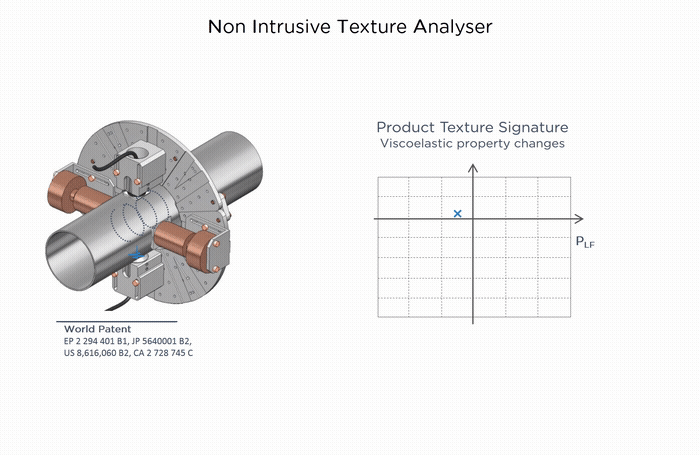General Principle
The dynamic acoustoelastic method (DAET) is a wave coupling technique: a low frequency compression wave propagates through the sample to be characterized, acting as a volume palpation, while "reading" ultrasound pulses probe the sample in these various stages of compression.
Analyzing the propagation speed and amplitude of these pulses provides information on the variations in the volume viscoelastic properties of the sample. The changes in these parameters under dynamic stresses can be represented using an acoustical rheogram, which is a snapshot of the viscoelastic behavior of the sample in expansion (negative low-frequency pressure) and compression (positive low-frequency pressure) phases.






